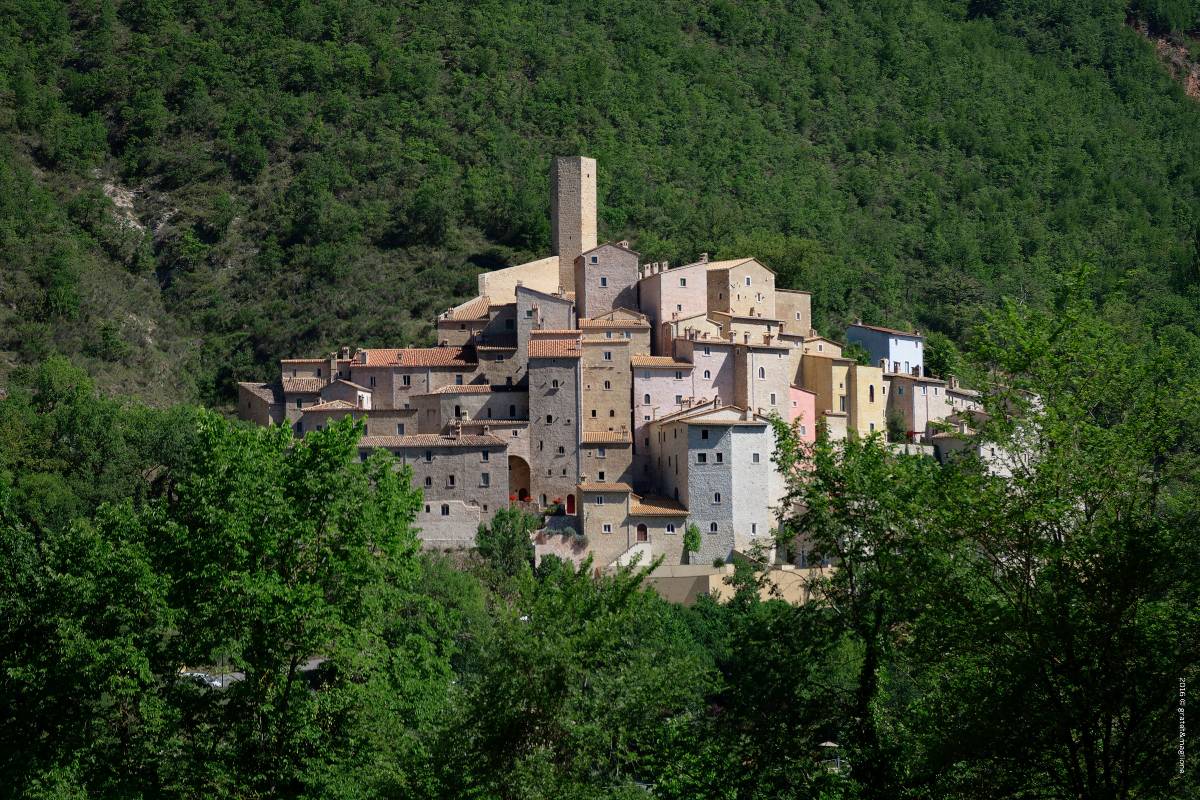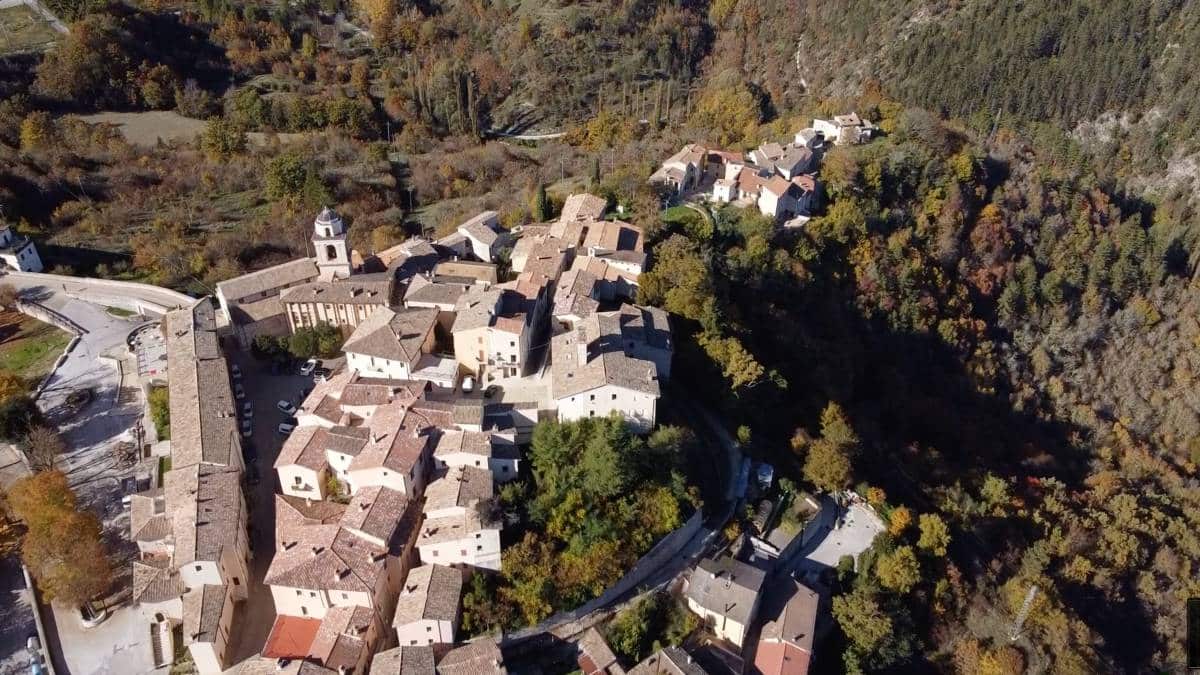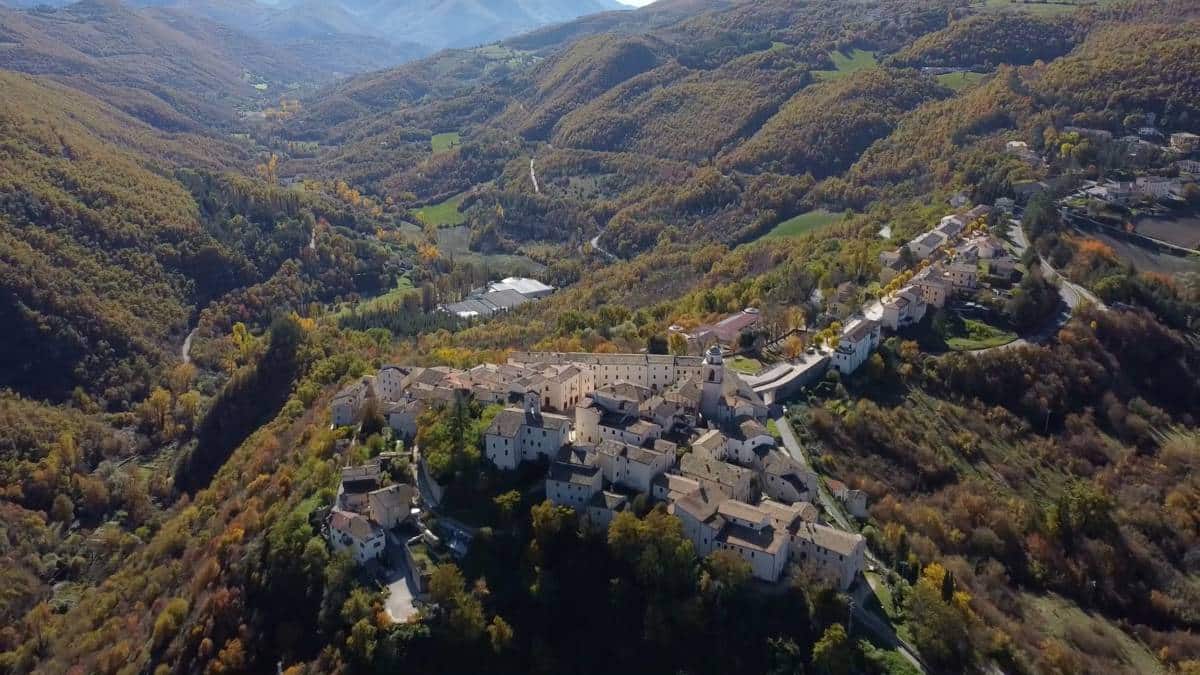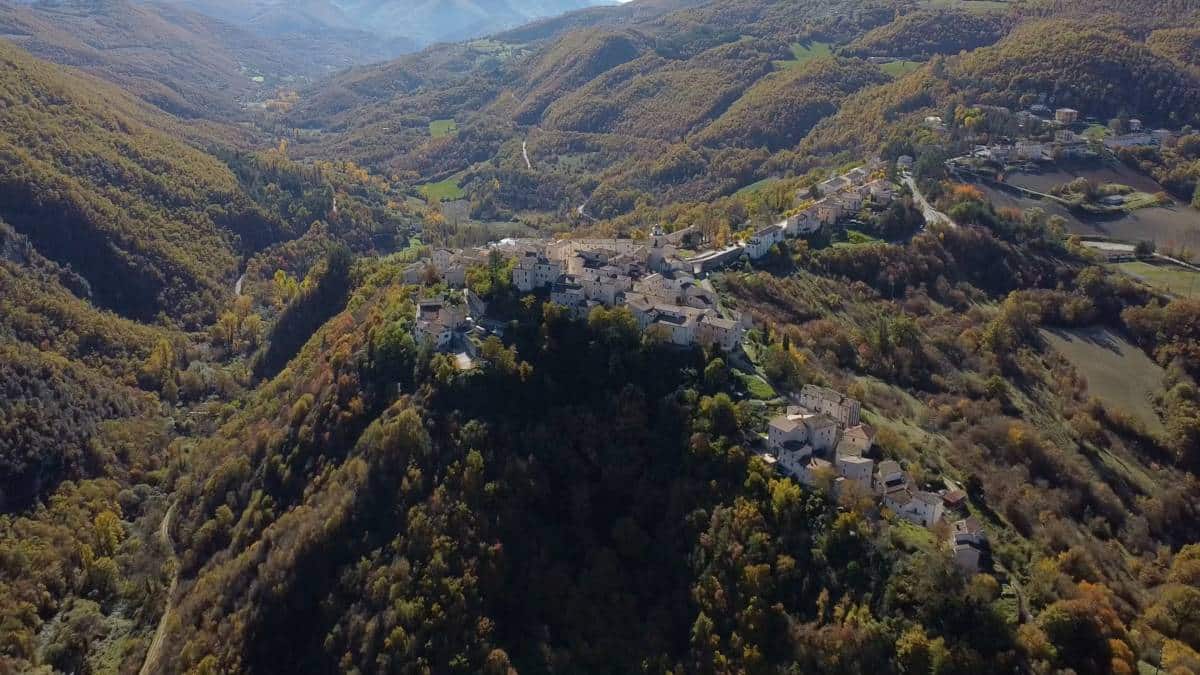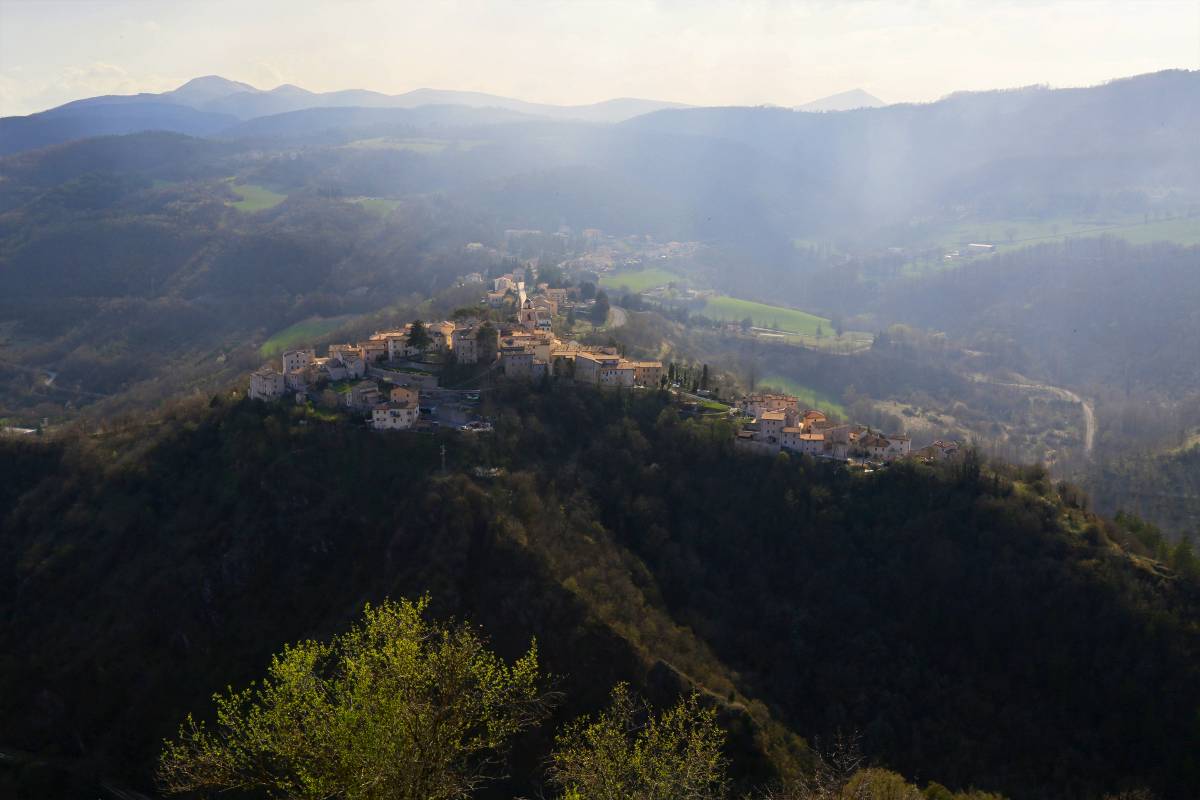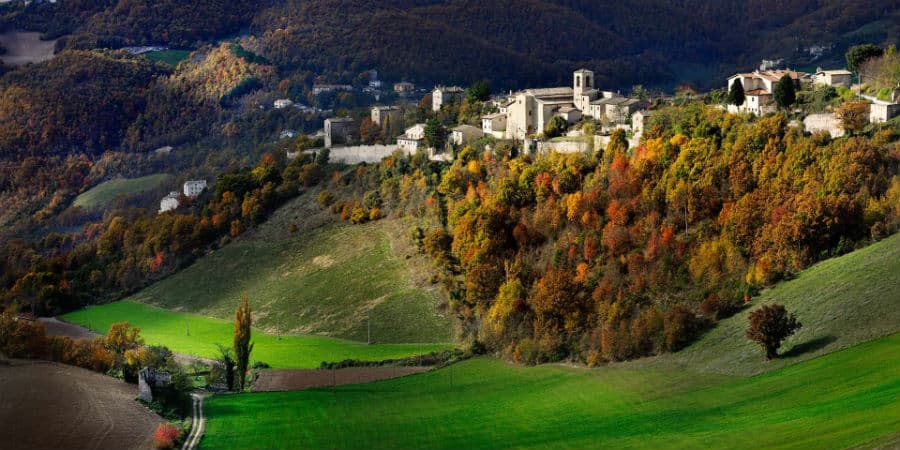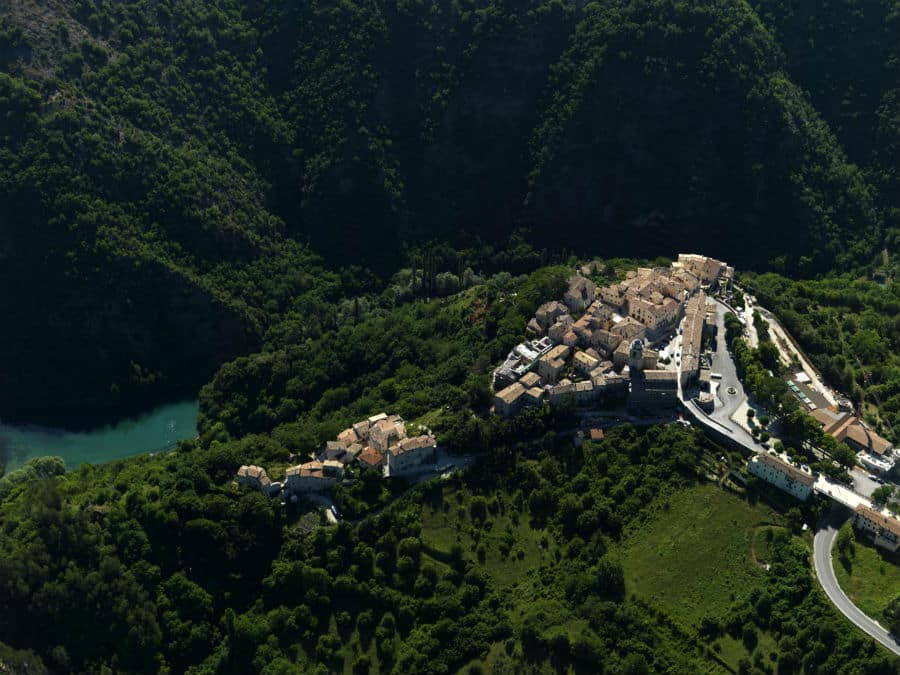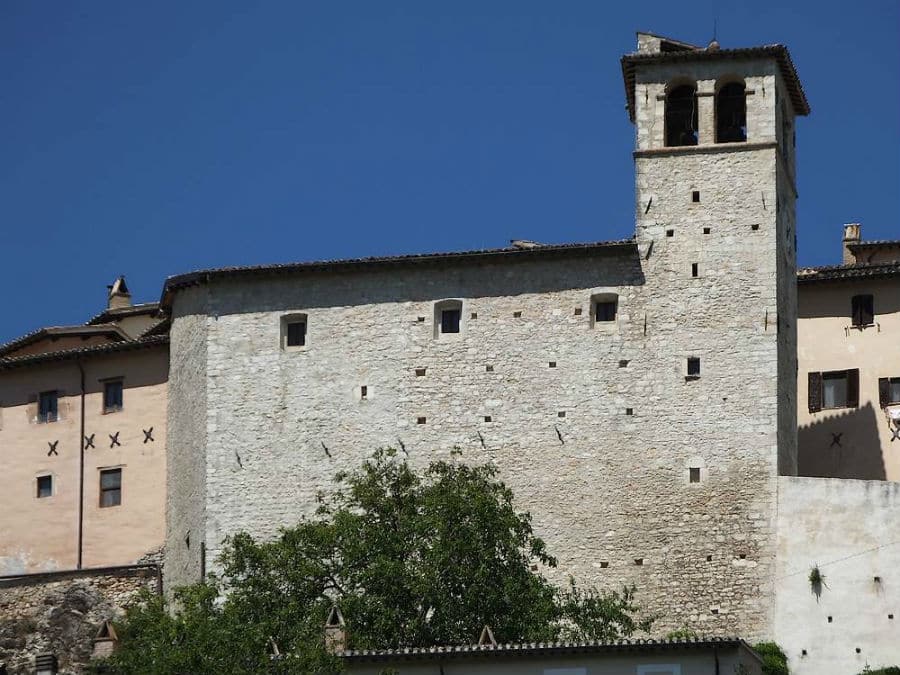Sellano is a charming village located in the province of Perugia, Umbria, which has its roots in a past rich in history and culture. With a toponym that could derive from the Roman gens "Suilla" or the followers of Lucius Cornelius Silla, the village has very ancient origins, bearing witness to continuous human settlement since the Roman age. The first traces of habitation, in fact, date back to that period, as evidenced by some epigraphs found in the area that attest to the existence of a vicus. The village developed around routes that connected the Valnerina with Foligno and Spoleto, assuming considerable strategic importance.
After the Lombard invasion, Sellano became a curtis, hosting Benedictine monastic communities and becoming a feudal possession. Its geographical location made it a coveted target, and the village became a free commune, albeit under the influence of Spoleto. Over the centuries, Sellano experienced a series of political conflicts and contentions, becoming an important point of reference for Ghibelline and autonomist forces in the region.
In the 13th century, Sellano became part of the Papal States, and in 1300 it became a fief of the Colligola family, lords of Montesanto. Despite its Ghibelline tendencies, the village never achieved independence, but it maintained a strategic role in the Umbrian political landscape. Its history is studded with significant events, including rebellion uprisings and political claims, until the final pacification with Spoleto in 1523. From that time on, Sellano developed as the "land" of the Spoleto District, expanding its administrative and territorial powers.
A significant event in Sellano's recent history was the September 1997 earthquake, which hit Umbria and Marche hard. However, thanks to careful restoration, the village has returned to its former glory, preserving the medieval architecture within its walls. Today, Sellano presents itself as a charming historic center, with noble palaces and Romanesque churches that tell its long history. Prominent among the main buildings of worship is the Sanctuary of San Paterniano, dedicated to one of the area's most revered saints.
The village is also a place of great spirituality, having been the birthplace of such enlightened figures as musician Domenico Mustafà and poetess Edvige Pesce Gorini. Sellano is linked to numerous religious traditions, with frescoed churches and wooden statues of great artistic value scattered throughout the area. The cave of the patron saint, located on the slopes of Mount Iugo, adds another layer of sacredness to the landscape.
But Sellano is not only history and spirituality; it is also a place alive with traditions. Festivals and folk festivals enliven the village, bringing to light its peasant and mountain past. Events such as the Sagra della Fojata, the Festa delle Erbe Dimenticate and the Festa della Campagna celebrate ties to the land and the cycles of nature. These events are not only a meeting point for the local community, but also opportunities for visitors to discover the authentic flavors and traditions of the area.
In addition, Sellano offers an extraordinary natural setting, with trails for trekking, mountain biking and the opportunity to enjoy outdoor activities such as fishing and mushroom picking. Lake Vigi, with its crystal clear waters, is an ideal place for bathing, while the "Rote" waterfalls offer breathtaking scenery to explore.
Finally, Villamagina, a hamlet of Sellano, is known for the production of files and rasps, a tradition that dates back to the 1700s. Here, the local community continues to keep traditions alive and hand down craftsmanship knowledge.
In summary, Sellano is a village where history, culture and nature are interwoven in a fascinating mosaic. Its beauty, spirituality and the vitality of its traditions make it an ideal destination for those wishing to discover authentic Umbria.


